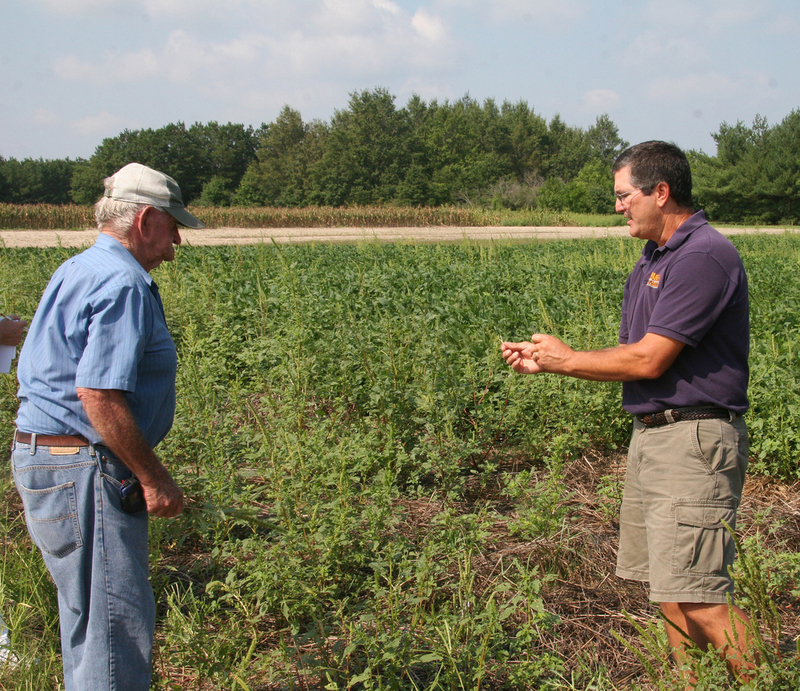Palmer amaranth could be the next big problem for Delaware farmers.
Amaranth, a grain cultivated for food in other regions, can also be a rapidly spreading weed that strangles agricultural crops.
First spotted in the state about five years ago, Palmer amaranth is causing problems for many farmers.
Mark VanGessel, weed scientist at the University of Delaware, joined Todd Davis, noxious weed supervisor for the Delaware Department of Agriculture, to declare palmer amaranth a noxious weed. Joining amaranth on the state-maintained list is Texas panicum, which is also spreading through the state.
“Palmer amaranth spreads very rapidly because a single plant is capable of producing 500,000 seeds,” VanGessel said. “It can reduce yields due to competing with crops for light, water, and nutrients. It can make cultivation or field operations very difficult because it can get large and interfere with equipment, and it can interfere with harvesting.”
Noxious weeds are defined as any weed with adverse effects or that threaten agricultural production.
The list includes six weeds – Johnsongrass, Canada thistle, Burcucumber, giant ragweed, and now Palmer's amaranth and Texas panicum.
Davis said the noxious weed law began in 1970 with Johnsongrass at the top of the list.
The noxious weed law makes it a crime to import any of these weeds into Delaware, except for purposes of research with prior approval from the Department of Agriculture.
Agriculture officials say Palmer amaranth has a high rate of seed production, and it is becoming resistant to herbicides used in corn and soybean production. Texas panicum is on the list because it germinates throughout the growing season. As a result, officials said, an additional herbicide application or tillage is required for late season control.
VanGessel said farmers should start planning ways to control noxious weeds before the season starts.
“Focus on controlling seedlings with pre-emergence herbicides or use of heavy cover crop residue,” said VanGessel.
He said timely treatments four weeks after planting the crop with post-emergence herbicides or cultivation or both can help.
So far, researchers have not found herbicide-resistant strains of Palmer amaranth or Texas panicum, but some have been identified in Maryland.
The Agriculture Department educates farmers about weeds, and provides assistance to farmers trying to control any of the six weeds on the list.
Information is available on treatments – both chemical and mechanical – to control the weeds. In addition, an equipment loan program allows farmers to borrow herbicide-application equipment at no cost.
The goal is controlling weeds because eradication is very difficult.
Green Deane, author of Eat the Weeds, an online edible plant forum, said Palmer amaranth is edible, but residents shouldn’t go out harvesting what grows in all farm fields.
“Amaranths are nitrogen collectors and Palmer amaranth is a super nitrogen collector,” Deane said. “This is no problem when grown on poor soil, but when it grows on agricultural soil, which contains a lot of fertilizer, there is a lot of nitrogen to uptake.”
Bottom line, Deane said residents could harvest it young to avoid the high levels of nitrates found in mature amaranths. The young leaves can be eaten similar to baby spinach. For more information on foraging, go to www.eattheweeds.com.
For more information on the noxious weed list, contact Noxious Weed Supervisor Todd Davis at Todd.Davis@state.de.us or by calling 302-698-4581.

























































